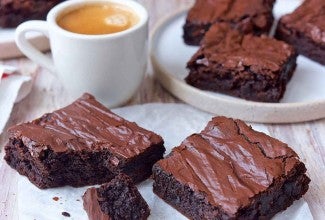Our trick for truly chewy, crackly brownies
Three key ingredients make all the difference.
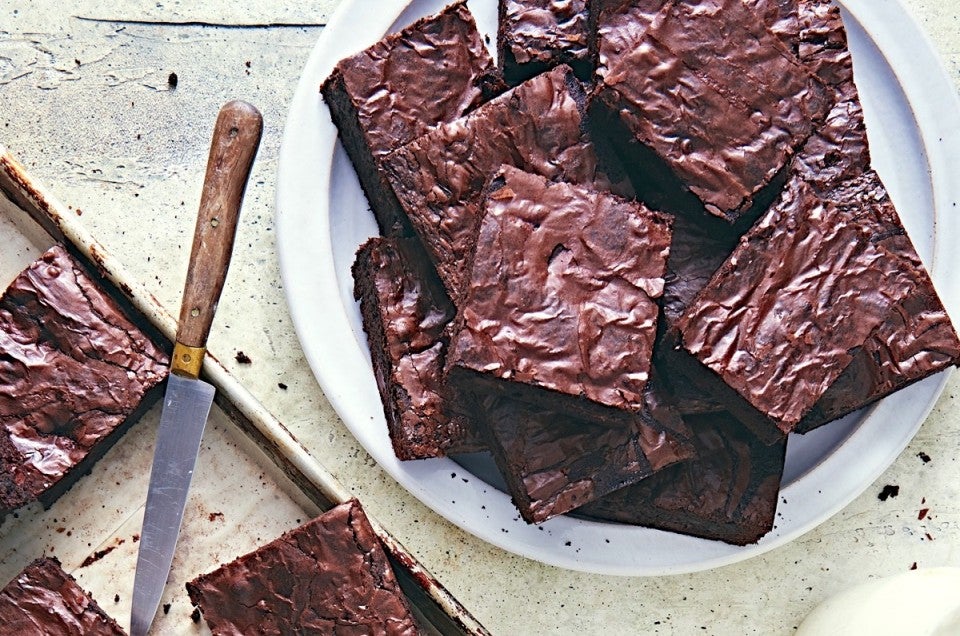

The typical fudge brownie we all know and love seems simple enough — measure, mix, bake — but in reality getting the exact results you want can feel like a bit of a gamble.
While almost all brownie recipes call for chocolate, sugar, flour, eggs, and oil or butter, your resulting brownies can come out thin and bendy, tall and light, gooey, chewy, cakey …
So what’s the secret behind these wildly varying results?
It’s all in how you handle three key ingredients.
If your taste runs to brownies with a deep-brown, chewy, fudge-like center and a lighter-colored, super-thin shiny top crust — IMHO, the ideal brownie — then our Fudge Brownies recipe is your dream come true. In fact, many of you out there have told us that these particular brownies are even better than your previous standard of excellence: the boxed mix.
After years of tweaking this recipe, I’ve discovered two tricks that’ll guarantee you a chewy center and shiny top crust every time. The first is to heat the recipe’s butter and sugar together before stirring them into the batter. The second is to then stir chocolate chips (or chopped semisweet chocolate) into that warm batter.
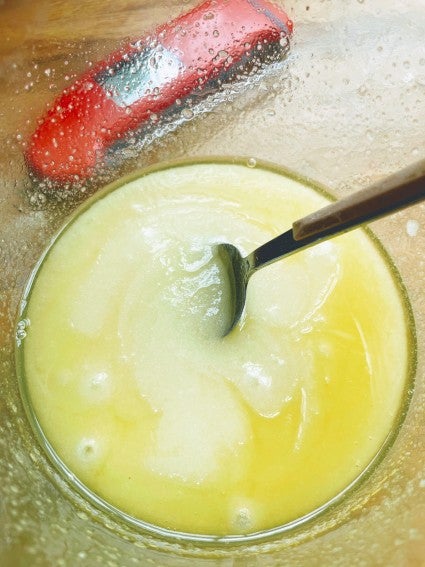
The path to brownies with a fudgy, chewy center — so dense their crumb becomes fine enough to almost (but not quite) disappear — is the combination of melted butter and sugar.
Cookbook author Jesse Szewczyk details the science behind using melted (rather than solid) butter in cookies in the secret to fudgier cookies. And it’s all about a step you don’t take, rather than one you do: creaming (beating) the butter and sugar, which adds air to the dough. The result? Light-textured, crispy cookies.
If instead you start by melting the butter and sugar together rather than beating (creaming) them, you introduce no air — yielding chewier, “fudgier” cookies. And the same is true of brownies. By minimizing any air in the batter, relying on just a touch of baking powder or baking soda for rise, you’ll get brownies with that desirable dense, fudgy center.
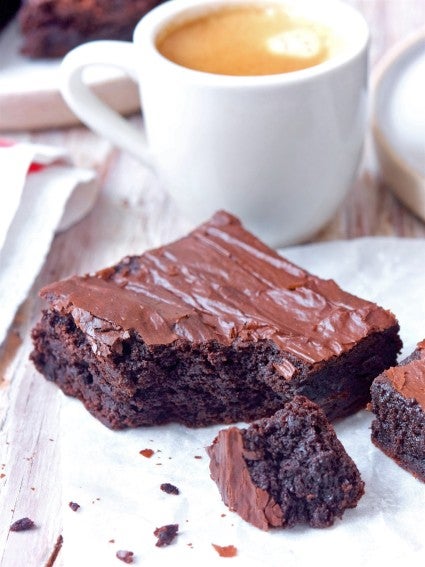
Melting together butter and sugar isn’t just about fudginess, though. It’s also the first step toward a shiny, ethereally thin crust, one that crackles into shards at the first cut.
That’s because a shiny top crust on bars (both brownies and blondies) is mainly about the migration of dissolved sugar from the center of the baking bars to their top crust. Once there, the sugar re-crystallizes in the oven’s heat and forms a delicate crust that shines like satin.
Heating the butter and sugar together separates the butter’s water from its fat, and the water then goes on to dissolve the sugar. When this heated mixture is added to the batter, the sugar further dissolves in the water from the egg whites. During baking this liquid sugar makes its way to the brownies’ exposed top crust, forming crackly, shiny swirls as the brownies finish baking.
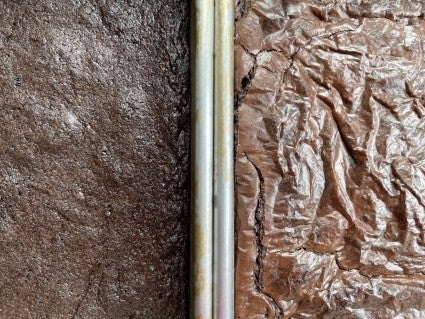
Simply heating the butter with the sugar won’t guarantee that shiny top crust, though. I’ve found I also need to add some solid chocolate in the form of chocolate chips or chopped semisweet chocolate.
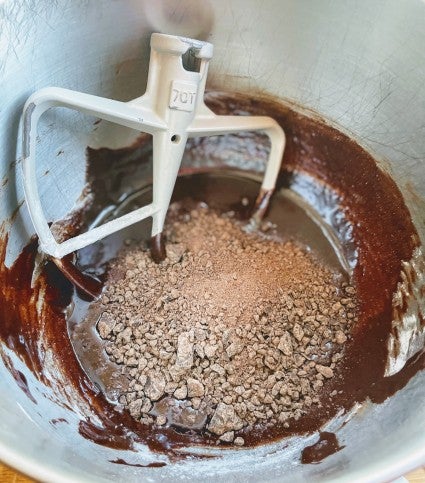
I’ve never been able to ascertain exactly why this simple step is needed to produce a shiny top crust. I do know that adding chocolate chips (or the equivalent weight of semisweet chopped chocolate) introduces additional sugar to the recipe; my theory is that, at least in the recipe I follow, the extra sugar dissolves and joins the sugar already in the recipe on its trip to the top crust.
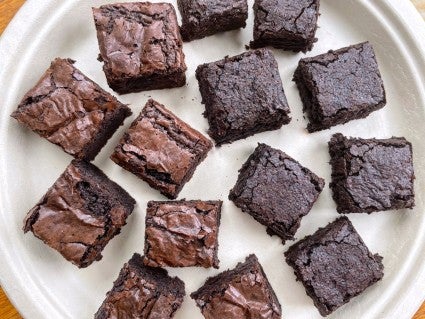
Any brownie recipe that calls for both butter and sugar should produce fudgier brownies if you heat the butter and sugar together before using. But as for that shiny top crust: It’s tricky. While you need enough water to dissolve the sugar, too much will produce cakey rather than fudgy brownies. Rather than retrofitting a non-fudgy, non-shiny brownie recipe, your best bet is to find an existing recipe that already yields a fudgy center and shiny top crust: Fudge Brownies is my favorite such recipe.
Baking brownies for a crowd? Our Big Batch Brownies recipe makes an entire half-sheet pan of fudgy, shiny-top brownies, enough for four dozen servings.
Cover photo and food styling (Big Batch Brownies) by Liz Neily.
